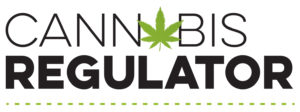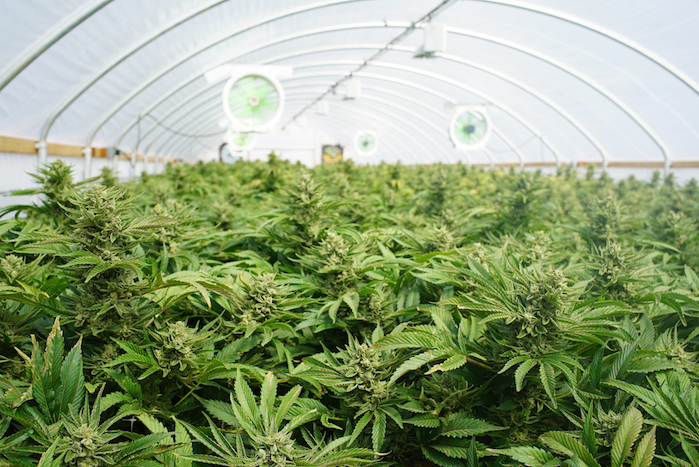States that legalize cannabis simultaneously promote safe use.
Typically this means educating citizens, and mandating warning labels on packaging to protect consumers. Failure to follow through with either can have negative consequences.
For instance, following legalization in Colorado, state hospitals reported spikes in babies born who tested positive for THC. As reported by CBS Denver, some mothers did not know that smoking cannabis while pregnant or nursing could negatively affect their babies, whose developing brains are likely affected by the drug.
Moreover, some early-legalization states seemed unsure how strictly to set packaging laws. This led to unintentional overdoses by consumers who did not know the correct serving sizes of products, or children who mistook edibles for candies.
These states have learned from their errors and improved. Colorado now requires a diamond-shaped logo containing the phrase “THC!” to be printed on all edibles and their packaging.
Colorado packaging law also forbids labels from making “false or misleading statements regarding health or physical benefits to the consumer.”
Cooperate And Learn
Washington joined Colorado as the first two states to legalize recreational pot in 2012. Rick Garza, director of the Washington State Liquor and Cannabis Board, credits cooperation between the two states to help set standards for education and safety. For instance, the safety guide Washington puts in retail stores is a copy of a Colorado pamphlet.
Garza has also kept an eye on Colorado to learn where Washington can improve. “Many of the initial problems in Colorado were with respect to the fact that they didn’t have maximum THC rules,” he says. “So we have them.”
Washington does not allow more than 100 milligrams of THC in edibles. This is to help prevent overdose. “If you’ve been consuming for many years, then you’re tolerance is obviously very high,” Garza says. “But if you’re new, then tolerance is going to be a problem. So we want to minimize potency.”
States in the second wave to legalize relational pot have taken note. Oregon does not allow more than 50 milligrams of THC in edibles — or more than 5 per serving.
California enforces warning labels for medicinal cannabis that include the phrases “THE INTOXICATING EFFECTS OF THIS PRODUCT MAY BE DELAYED BY UP TO TWO HOURS” and “THIS PRODUCT MAY IMPAIR THE ABILITY TO DRIVE OR OPERATE MACHINERY. PLEASE USE EXTREME CAUTION.”
In terms of packaging, Garza says that Washington has “strict” rules that, unlike in Colorado, forbid production of any edibles that “mimic anything appealing to children.” This includes gummies, cotton candy, or anything brightly colored.
“We try to keep it safe and keep it our of children’s hands,” Garza says. “We promote responsible sales.”
In April, Garza adds, Washington will host the first-ever summit for cannabis regulators (in Seattle). And he is in regular contact with his and his office’s equivalents in other states, discussing responsible regulations. The leaders of this new industry are finding ways to learn from each other, which benefits the market as a whole.
Group Help
Outside groups are also getting into the movement to promote safe use.
The Marijuana Industry Group in Colorado has announced a new public service campaign that aims to educate consumers. Ads that will run in cannabis-based print and online publications will stress safety.
Planned messages include: “If you’re gonna dab, take a cab. Please consume responsibly.” “It’s 4:20 somewhere. Start low. Go slow. Please consume responsibly.” “Lock it up. Keep it from your curious kids. Please consume your cannabis responsibly.” “Welcome to Colorado, the world’s first legal cannabis market. Please consume responsibly.”
The Marijuana Industry Group also plans to heavily promote messaging against driving while stoned. This activity is something states have struggled with post-legalization, as there remains no standardized roadside test for such impairment, unlike for DUIs.
Government responsibility for legal pot ends up in the hands of state alcohol regulators, so one group that’s keeping a close eye on cannabis is the National Alcohol Beverage Control Association. When it comes to protecting public safety, Steven L. Schmidt, NABCA Sr. VP of Public Policy and Communications, has this advice: “If you want to, you can take it slow.”
For instance, states do not have to hand out a ton of retail licenses right away after legalization. “There are other choices to do this,” Schmidt says. “You can take it slow, chose to control it more, rather than say, ‘Hey, let’s open the doors to all commercial interests that want to pursue this’.”
“Make sure you start it slow enough that you can regulate it properly,” Schmidt adds. “That’s important moving forward.”
For states that have legalized cannabis or are considering it, Schmidt says that NABCA recommends “robust” public awareness and education programs.
Important subjects to cover, he says, are fetal affects, dosages, packaging, students passing off edibles as normal food in school, the danger of mixing alcohol and cannabis, training retailers and servers to recognize when someone is both drunk and stoned, and remaining aware of the paid interests of those who speak for or against cannabis.
To his last point, being wary of paid interests, Schmidt recommends connecting with federal agencies for regulators who want to research cannabis, as these groups will be objective in their information. These include the National Institute on Alcohol Abuse and Alcoholism.
Kyle Swartz is editor of Cannabis Regulator. Reach him at kswartz@epgmediallc.com or on Twitter @kswartzz. Read his recent piece How Cannabis Laws Differ Across The United States.










